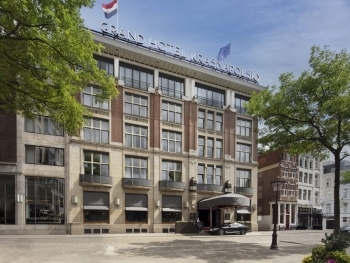Perched majestically atop the Spanish Steps, the Hotel Hassler offers panoramic vistas across Rome, epitomizing elegance and luxury since its inception in 1885. Renowned for seamlessly blending Swiss precision with Italian romanticism, this historic establishment remains one of the premier addresses in Rome. Owned by the illustrious Wirth family, a dynasty of Swiss hoteliers, the hotel has been under the personal management of Roberto Wirth for over two decades, ensuring its enduring charm and excellence.
Historical Timeline
Early Beginnings
1865: Albert Hassler marries Caroline Breuninger, marking the beginning of a partnership that would soon influence the hospitality industry.
1866: The Hasslers open a modest restaurant in Naples, quickly becoming a popular meeting spot for the German and Swiss expatriate community.
1872: Expanding their venture, the Hasslers lease the Grand Hotel in Catania, Sicily, establishing a reputation for quality service and hospitality.
Establishment in Rome
1880: The Hasslers relocate to Rome and take over the Hotel New York on Via Bocca di Leone, renaming it Hotel Hassler De New York. It rapidly gains popularity among German, Swiss, and Austrian travelers.
1885: The Hasslers acquire a property atop the Spanish Steps, a prime location that would become the hallmark of their hotel’s identity.
1893: The new Hotel Hassler opens at its current site, attracting a discerning British clientele and maintaining its appeal to German tourists. The hotel’s prime location and superior service quickly make it a favorite among elite travelers.
Growth and Challenges
1912: An Italian hotel guide lists the Hotel Hassler as having 80 beds, with Albert Hassler noted as the proprietor.
1921: The hotel transitions to the ownership of Oscar Wirth, a member of a prominent Swiss hotelier family who had established Europe’s first hotel chain in 1873.
Mid-20th Century Evolution
1924: The hotel is renamed Hassler New York, reflecting its evolving identity while honoring its roots.
1939–1945: The Second World War brings recession to Italy and Rome, impacting the hotel industry significantly.
1945: During the war, the hotel undergoes enlargement and reopens to accommodate the liberating forces, including a stay by General Eisenhower.
1948: Expanding its capacity to 160 beds, the hotel is renamed Hassler – Villa Medici, continuing to attract an international clientele.
Post-War Renaissance
1950–1970s: The Hotel Hassler becomes a favored destination for American tourists, coinciding with Rome’s booming tourism era. The rooftop terrace, offering spectacular views of the city, becomes a distinctive feature.
Modern Era
1982: Roberto E. Wirth, son of Oscar Wirth, assumes the role of general manager. Under his stewardship, the hotel continues to thrive, blending tradition with modern luxury. Roberto Wirth, now the sole proprietor, upholds the family legacy, ensuring the Hassler remains synonymous with unmatched elegance and exceptional service.
The Hotel Hassler stands as a testament to enduring luxury and impeccable service. From its modest beginnings to its status as a global icon, the Hassler's history is rich with tradition and innovation. As it continues to welcome discerning travelers from around the world, the Hassler remains a jewel in the crown of Rome’s hospitality industry, offering a timeless experience that combines the best of Swiss efficiency and Italian romance.

